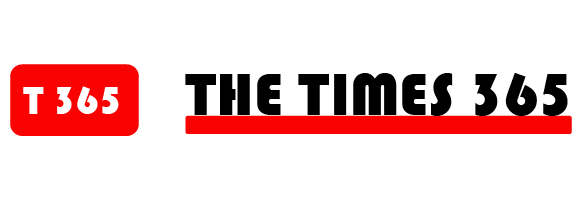Personal finance nerds (like myself) spend an inordinate amount of time thinking about retirement.
How much do you need? How can you ensure that you don’t run out of money in retirement? What’s the fastest way to get there, and does fast also mean safe?
For the last 20 years, the 4% rule (a.k.a. the 25X rule) has been something of an industry standard. At the very least, it’s been a shorthand to use as a reference point. But for all its simplicity, how “true” is it? Does it leave room for shortcuts?
Is it even still relevant in today’s economic environment? And where do rentals fit in?
But we’re getting ahead of ourselves. Let’s start at the beginning.
How Did the 4% Rule Come About?
Back in the ‘90s, financial advisor Bill Bengen introduced the idea of the “4% rule.” It’s simple enough: A retiree can afford to withdraw about 4% of their nest egg each year, if they want it to last them 30 years. Bengen proposed this rule after analyzing historical stock and bond market returns and found a 4% withdrawal rate to be safe for retirees.
On the simplest level, it makes sense. If your stock portfolio rises in value by an historically-reasonable 7%, and you subtract out 2% of that for inflation, that leaves a “real” return of 5%. You take 4%, and voila! Your stock portfolio’s value actually rose by 1% over the course of the year, even though you sold off some of it.
The other way of thinking about this rule is by its other name, the 25X rule. It dictates that investors will need a nest egg of 25 times their annual spending if they want to live on 4% of it each year. Thus, if you want to withdraw $40,000/year as income, you’ll need a $1,000,000 nest egg.

How Does the 4% Rule Hold up in Today’s World?
First, consider the simplest problem at all: What if you live for more than 30 years after retiring?
Americans who reach 60 can expect to live into their 80s—and increasingly live into their 90s or even become centenarians. So, this 30-year timeline may not leave every 60-year-old jumping for joy.
Related: 7 Achievable Steps to Reach 7-Figure Retirement Savings
And hang on a second—does it even guarantee you 30 years of income?
Of course not. Aside from the possibility that you invested money in the next Enron, the market could crash right after you retire. One T. Rowe Price study found that, moving forward, there’s 90% probability that retirees following the 4% rule won’t run out of money in 30 years. This means that a troubling 10% of the time, retirees could expect to run out of money.
Bonds, interest rates, market crashes, oh my!
Some of your retirement portfolio is probably made up of bonds, not stocks. And in the ‘90s, when Bengen proposed this rule, interest rates were high and bonds paid well.
In a low-interest environment (like we’ve seen in this century), investors can’t expect much in the way of returns from them. They also have a fixed lifespan and run out eventually. Still, retirees often still rely on them because of their greater reliability over stocks.
That T. Rowe Price study above was based on a 60% stocks/40% bonds allocation, just like Bengen’s original proposed rule allocation. But not everyone uses this asset allocation. What if you retire with half of your portfolio in stocks and half in bonds? A Vanguard study found that over 35 years, the rule only worked 71% of the time under these conditions.
Here’s the other big risk with the 4% rule: what if the market crashes right after you retire? If you’re only pulling money out when a market crashes and not putting any money back in, then it’s all downside for you. You lose money on the crash, but don’t make any money by investing in the recovery.
Sure, the market will eventually recover, but between now and then, you will have had to draw down significantly on your balance. When the recovery comes, your remaining portfolio will be much smaller, leaving less to regain lost ground with.
For all that, financial planner Michael Kitces points out that over the last 150 years, there has not been a 30-year period when someone following the 4% rule would have run out of money.
The Wild Card: How Rentals Change the Math
Here’s where things get interesting. What happens when rentals enter the mix?
In our earlier example, we decided we wanted $40,000 in income post-retirement in addition to Social Security, which would mean a $1,000,000 nest egg. That comes to $3,333/month.
Our imaginary friend Michelle invests $250,000 in a fourplex that rents for $3,600/month. After expenses, let’s say she earns $1,800/month on it.
Now she only needs another $1,533/month, or $18,396/year, from her stock portfolio. That means a nest egg of $459,900.
See what happened there? Michelle’s total sum needed just dropped from $1,000,000 to $709,900 ($250,000 for the fourplex, $459,900 for stocks). She just trimmed nearly $300,000 off her total necessary assets!

The Balance Between Rentals and Stocks
Sometimes stock markets crash. Sometimes rental properties hit their owners with several expenses at once. But that’s the beauty of diversification—those two events almost always remain unrelated.
During the Great Recession, U.S. stocks crashed by around 30%, and real estate values dropped similarly. But rents did not drop. Why? Because so many homeowners became renters that the demand for rental housing actually increased.
Smart landlords set aside money for repairs, vacancy rate, CapEx, etc. into a property fund each month, so that when a turnover or a $5,000 roof bill comes along, they’re prepared for it. But imagine that several turnovers and a huge roof bill happen to come along all at once. A retiree can draw a little extra from their stock portfolio that month to cover the difference.
Related: Want to Retire Early? Sorry, But Much of Your Net Worth May Not Help
When landlords see strong performance from their rentals, they can always invest extra in their stock portfolios. Likewise, when their stock portfolio is suffering, landlords might postpone a property upgrade they’d been considering and lean more heavily on their rental income.
And there’s that little matter of inflation; rents rise alongside (or surpass) inflation. That makes rentals an excellent hedge against it.
Diversification is a beautiful thing.
The Exponential Impact of Spending
Consider this side of the 25X rule: It highlights just how costly each extra dollar of spending is for your bottom line.
For every $100/month that you spend, you’ll need an extra $30,000 in your nest egg, according to the 25X rule. Seriously, $100/month is $1,200/year, which multiplied by 25 is $30,000.
Is your cable bill really worth having to invest another $30,000? What about that latte habit?
At the risk of sounding like a nag, if you cut that spending now, you can invest it and reach your nest egg goals much, much faster. For a tough (but rewarding!) challenge, try living on half your income and investing the rest.
Eyes on the Prize: Financial Independence
For me, the point of investing is clear and simple: replacing active income with passive income. On the day when my passive income can cover my expenses, I’ll reach financial independence, and every day that I work thereafter will be a choice.
Any discussion of withdrawal rates (e.g. the 4% rule) rests on an underlying fear. At its heart, the discussion revolves around “how much of my portfolio can I sell in a given year, with a reasonably low risk of running out of money?”
I don’t want to worry about running out of money. I want my portfolio to keep growing even after I retire. And to do that, all I must do is focus on building passive income. Rental properties, stock dividends, and bonds all offer it.
You can still sell off stocks in retirement, of course. Selling off 2%, 3%, even 4% will almost certainly leave you in fine shape. But if you can keep that number under 3-4%, and replace a healthy chunk of your monthly income with rents instead, your nest egg will almost certainly grow rather than shrink.
We’re republishing this article to help out our newer readers.
How is your retirement investing coming along? What tips do you have to get there even faster?
Leave your thoughts and questions below!
Note By BiggerPockets: These are opinions written by the author and do not necessarily represent the opinions of BiggerPockets.







